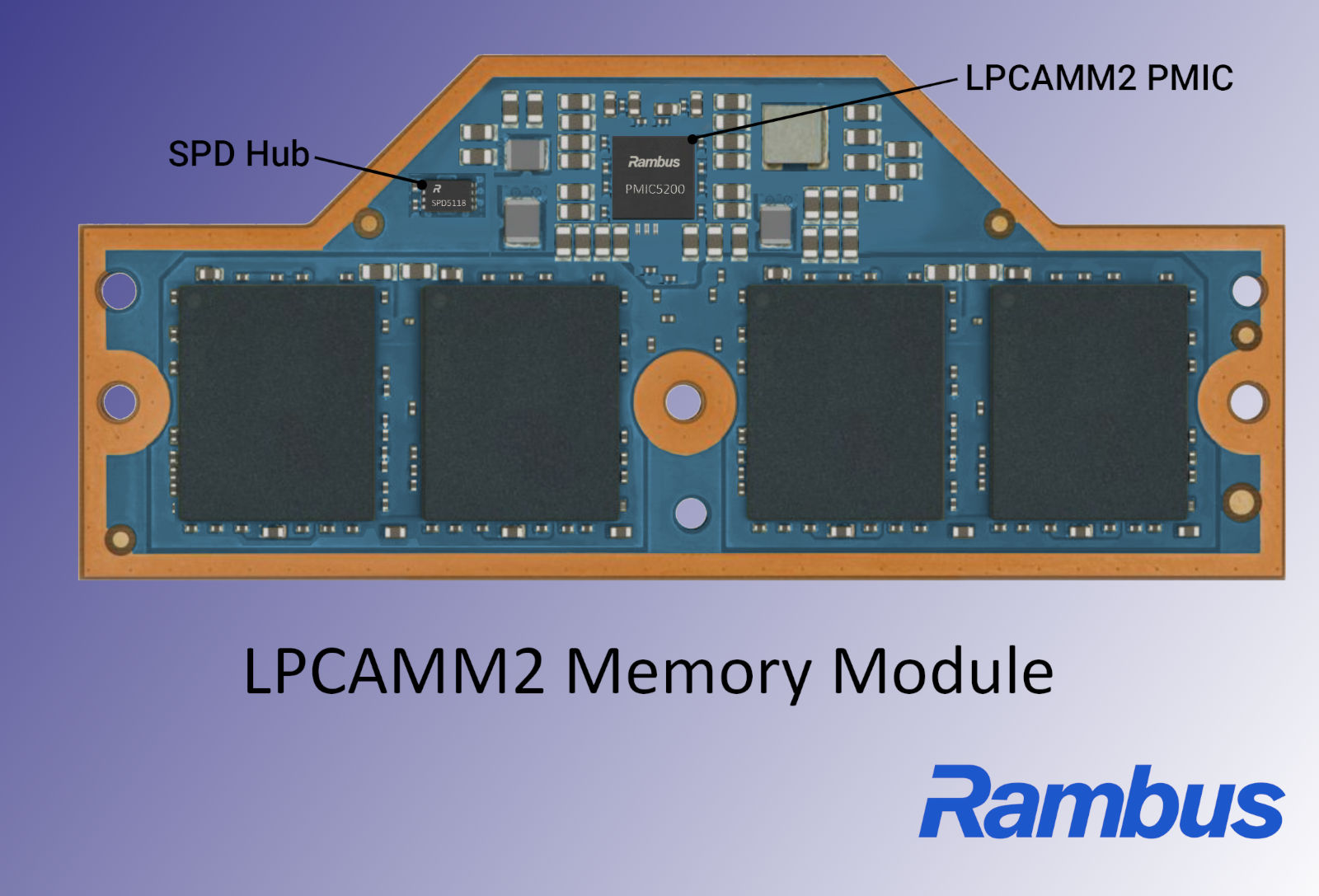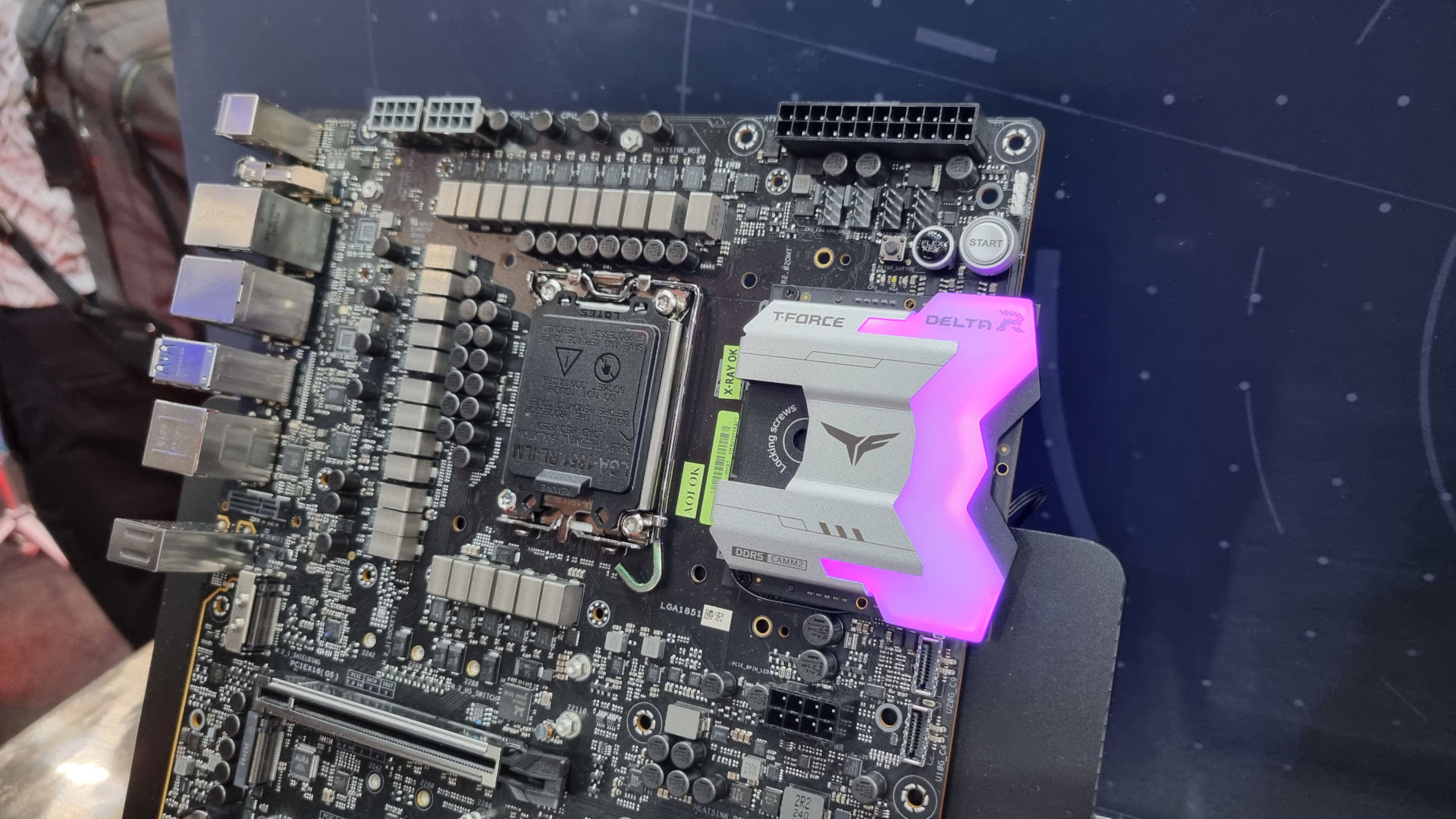
All aboard for the CAMM2 can-can.

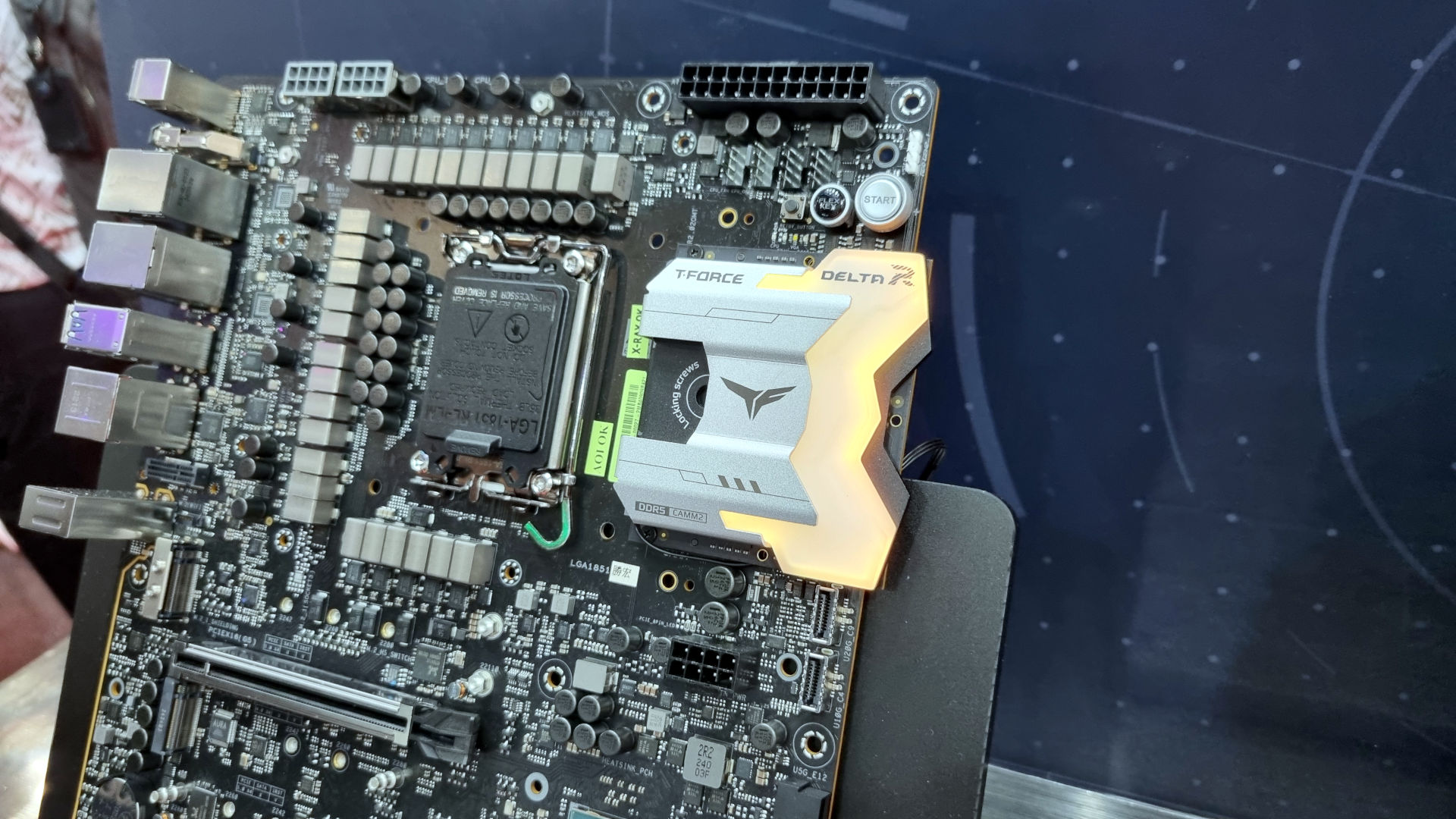
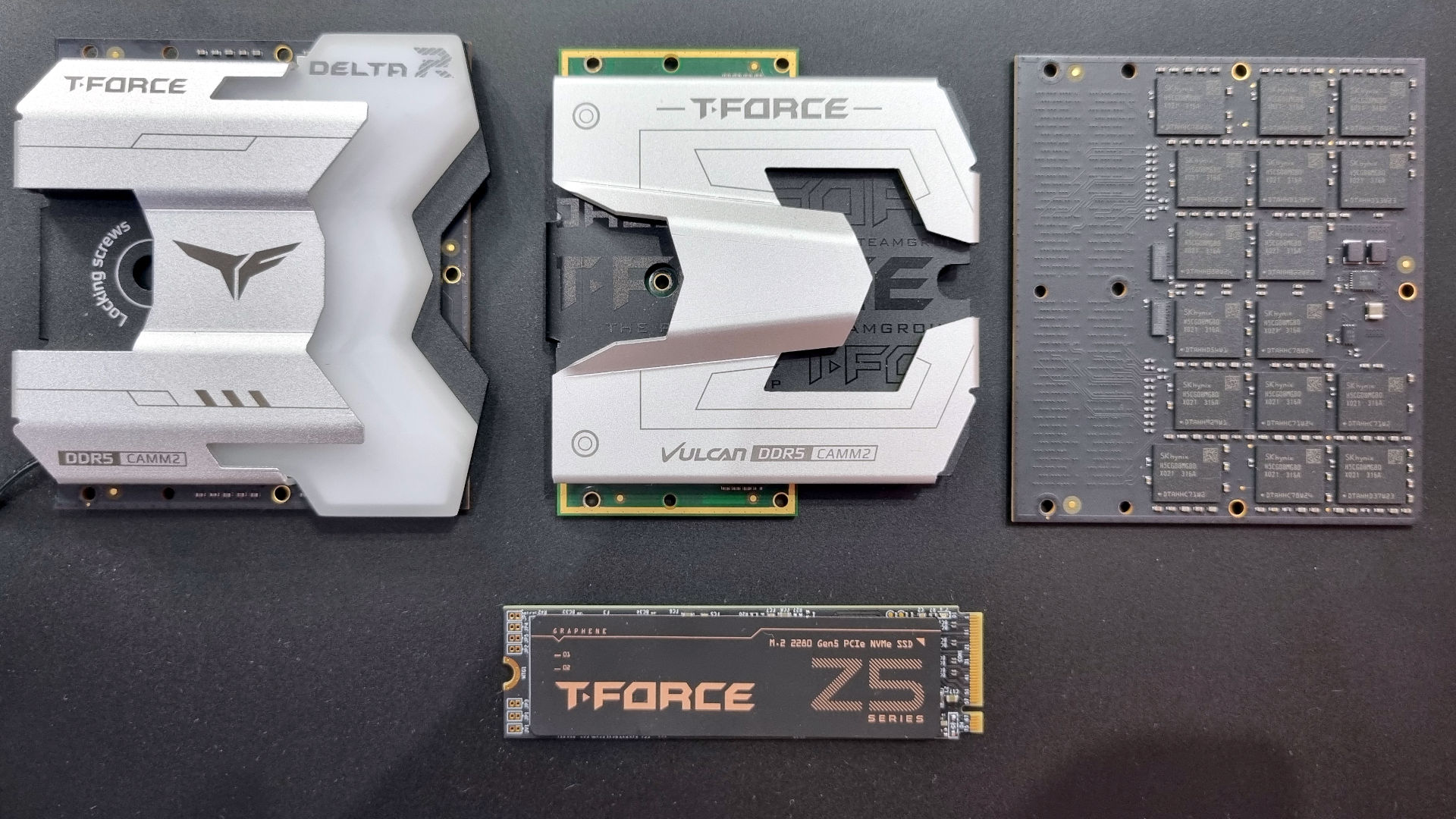
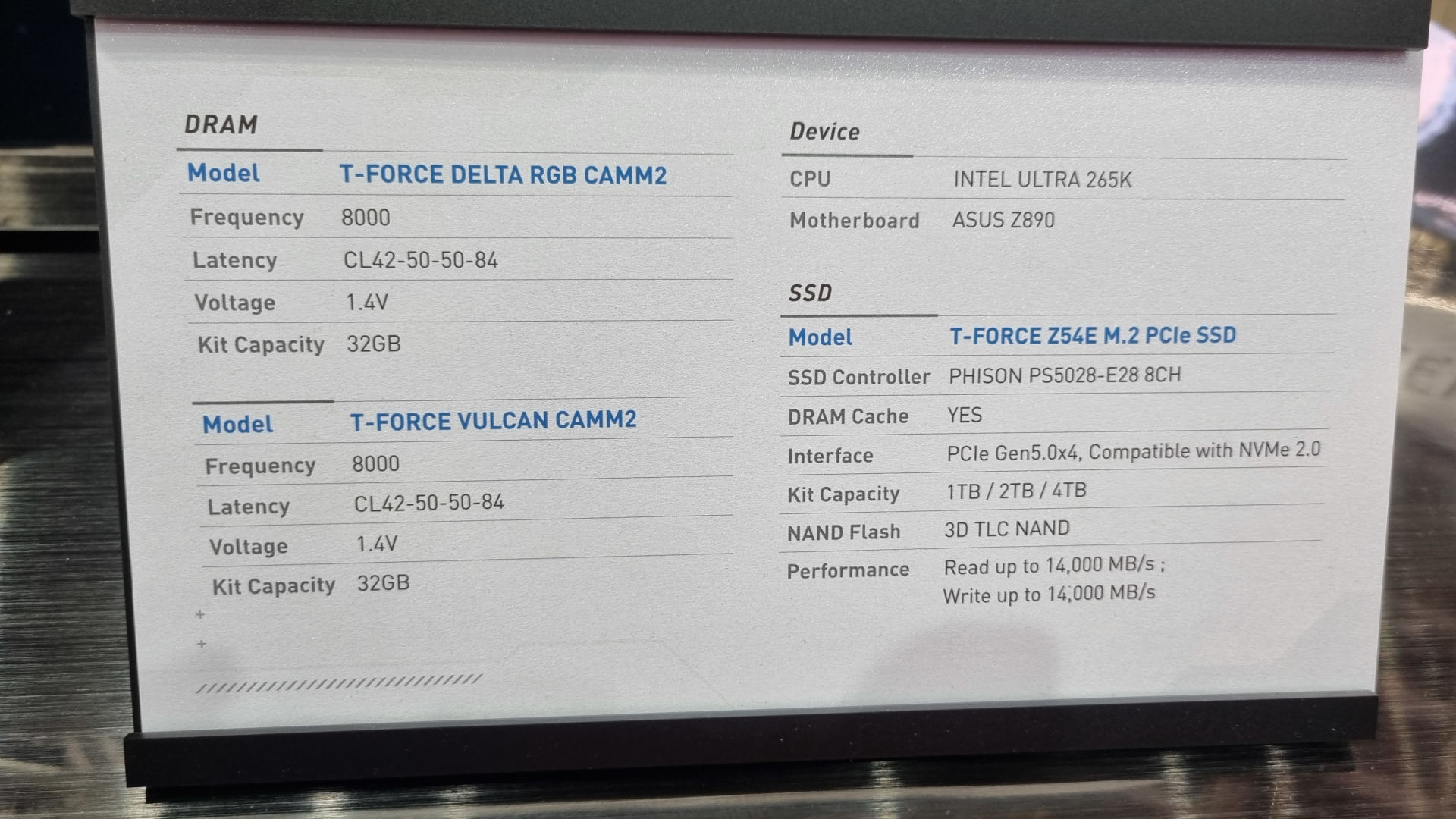
It’s been two years since the CAMM2 RAM format made an appearance, but despite support from the biggest memory vendors around, such as Micron, we’ve yet to see it make any real headway in the RAM market. However, at Computex 2025, there were clear signs that this could be the year that the low-profile memory format finally appears in our gaming PCs.
If you’re unfamiliar with CAMM2, here’s a brief rundown on what makes it different from the RAM sticks we’re all familiar with. The new format (can I still call it new when it’s been around for a couple of years?) still uses the same DDR5 chips that every new gaming PC, laptop, and handheld uses, but they’re housed in a very different way.
Instead of using vertical circuit boards that fit into multiple slots, the RAM chips are soldered onto a single, horizontal board, which is then attached to a port on the motherboard and screwed in place. The system allows for better signalling, more power, and easier cooling. Three wins all round.
Despite its advantages over traditional RAM formats, CAMM2 and its low-powered version, LPCAMM2, have yet to make headway in the PC market. But I reckon that’s about to change, and for a couple of reasons. Firstly, we’ve been seeing a variety of CAMM2 add-ons at this year’s Computex event.
For example, Team Group showcased its new CAMM2 DDR5-8000 module, replete with a very cool-looking RGB heatsink. So what, you may think. Well, Team Group doesn’t go down the road of experimental, bespoke technology like some vendors do—it prefers to stick to markets that it knows and sells well in. So if Team Group is onboard the CAMM2 train, then others won’t be far behind.
Something else that’s convinced me that 2025 is going to be CAMM2’s year is the fact that Rambus has joined in the fun, too, releasing its own range of flat memory modules for desktops, servers, and laptops.
Rambus isn’t as big a player in the RAM market as the likes of Samsung and Crucial, so it must have good reasons for joining the club. I asked Rambus how it sees things changing in the memory market, with regards to the uptake of CAMM2.
“We expect LPCAMM2 will progressively gain market adoption in notebook PCs later this year, with continued growth into 2026 and beyond,” said Peiro Bianco, Rambu’s senior director of product marketing. “To support this transition, Rambus has developed a complete PMIC and SPD chipset, helping businesses stay ahead of the adoption curve and enabling AI-powered notebooks to meet growing memory demands.”
Catch up with Computex 2025: We’re stalking the halls of Taiwan’s biggest tech show once again to see what Nvidia, AMD, Intel, Asus, Gigabyte, MSI and more have to offer.
With Team Group going all CAMM2 gamer RGB and Rambus targeting the continued growth of AI PCs with its LPCAMM2 tech, I’m pretty certain that we’re going to see a raft of new CAMM2 motherboards from all the big vendors later this year.
The performance of GPUs and CPUs is starting to stagnate a little, or rather, the generational increases are becoming ever smaller. However, there’s still a lot of scope for memory to operate much faster, either through ultra-high clock speeds or via super-tight latencies, or indeed both. CUDIMMs are another way of achieving this, but because they use the traditional DIMM format, they’re not as easy to cool as CAMM2 modules.
I don’t expect anyone will rush out to buy a new CAMM2 motherboard, of course, as the first generation of them is likely to be quite pricey. But once OEMs and system builders are churning out rigs sporting the funky, flattened RAM, there should be CAMM2 goodies for every budget.

